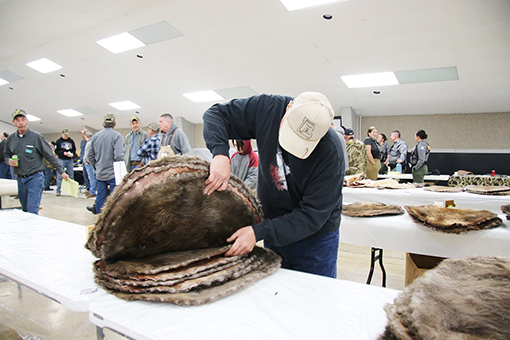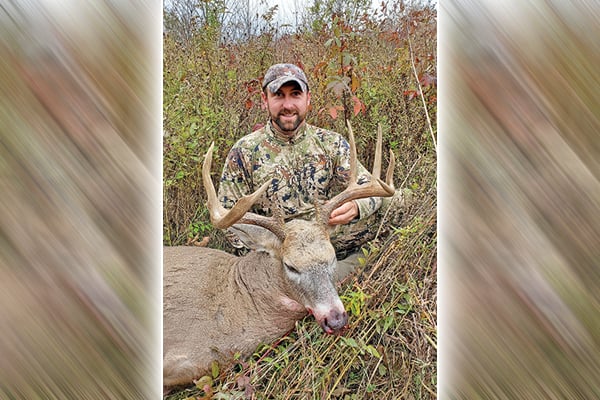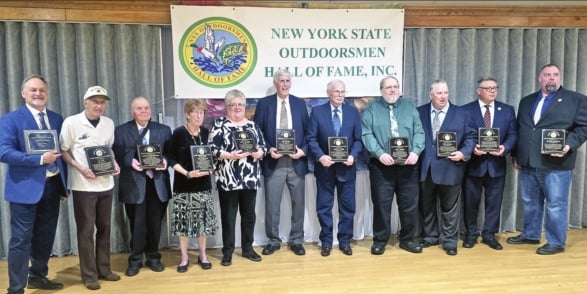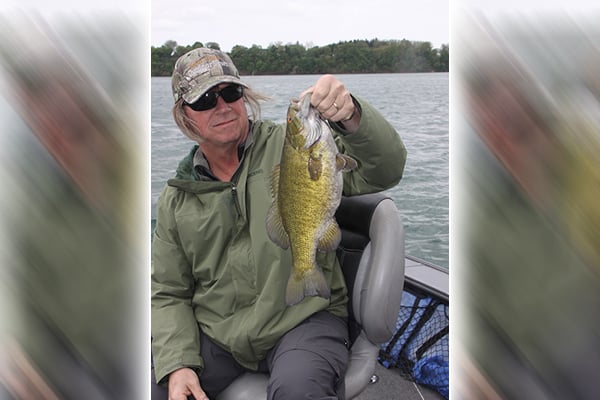Jeff Frischkorn: More study needed on straight-walled cartridges’ impact on deer harvest in Ohio – Outdoor News
There’s an adage in outdoor journalism that says never to argue with a biologist – even when you are correct.
I reminded myself of this axiom since the figures arrived for Ohio’s general firearms deer-hunting season and the two-day bonus firearms deer-hunting season.
 At the time, I should have realized what I was getting myself into when I suggested that – as Sherlock Holmes said: “Something is afoot.” I opined there are possibly other elements besides more deer being on the landscape and a more liberal allowance of antlerless deer tags being solely as the only significant indicators responsible for the surge in animals being killed.
At the time, I should have realized what I was getting myself into when I suggested that – as Sherlock Holmes said: “Something is afoot.” I opined there are possibly other elements besides more deer being on the landscape and a more liberal allowance of antlerless deer tags being solely as the only significant indicators responsible for the surge in animals being killed.
You’d have thought I touched the forbidden third rail of fish and wildlife officialdom. The howls of disagreement ascended to heaven like a swirl of thick bureaucratic smoke.
After all, I mused, it was/is difficult to explain how Ashtabula County ranked so high during the week-long general firearms season when its northern half was buried in up to nearly five feet of snow. Or that Bula County (as its known in these parts) could come out on top during the two-day gun season when the entire county was under a lake effect snow advisory.
My opinion then went on to suggest – suggest, mind you – there are other factors that may have contributed to Bula County’s standing, along with that of other counties. After all, it was implausible to me to believe that the southern half of an entire county that’s two-thirds the size of Rhode Island could take up the slack in the deer kill. Not when the northern half was enveloped in waist-deep snow.
MORE WHITETAIL COVERAGE FROM OUTDOOR NEWS:
Want to hunt Western big game? Know these tips for navigating tag systems
Eric Morken: Gear that stood out from the 2024 bowhunting season
Ryan Rothstein: The start of a new year means preparing for a new deer season
Amongst my more fervent beliefs is that the evolutionary incline in the use of straight-walled cartridges – or SWCs – were (and are) significant contributors to increased deer kills. Among these rounds are the .350 Legend and the .450 Bushmaster, along with the handgun-to-rifle inclusion of the .44 Magnum, as well as the phoenix rebirth of the .45-70 Government.
Yikes, now there’s a third rail if ever there is one.
“For nearly a decade, while the gun season harvest was flat, the proportion of deer killed with a SWCs was increasing. If there was any connection between the two, I would suggest that it might – like the crossbow – keep aging hunters in the game longer – be that the SWC may be helping to hold the line on participation during the gun season,” said Mike Tonkovich, the Ohio Division of Wildlife’s deer program administrator. “That is it. But it is not accelerating the harvest. No way, no how. The weather and the sheer number of deer tell the complete story for me.”
And that’s the rub to which I disagree, but with this vital footnote. Tonkovich and his associate Clint McCoy are smart, intelligent wildlife biologists. They’ve always been easy to access and offer stellar thoughts. But they are no more perfect than are outdoors journalists in expressing an opinion.
The very fact that straight-walled cartridges are helping aging hunters stay in the deer-hunting fold and recruiting new/younger hunters strongly hints that doesn’t take much of a stretch to understand how such weaponry is assisting/contributing to higher deer kills.
Clearly, too, it should be accepted by one and all that SWCs are more accurate, carry more energy than do the horribly out-date Foster-type and sabot slug shotgun slugs. With the exception that perhaps within 50 yards a shotgun slug remains potent deer-killing medicine.
Too, SWCs are much more friendly on the shoulder. A 12 gauge, 23⁄4-inch slug packs 45 foot-pounds of energy. A 3-inch shotgun slug packs 52 to 54 foot-pounds of energy. Those are energy equivalents of the tooth-loosening .340 Weatherby Magnum and the .416 Remington Magnum, respectively.
At the other end of the recoil spectrum is the .350 Legend with its 8.5 foot-pounds, or the equivalent of a .243 Winchester.
It must be noted, as well, that as it stands today about 60% to 65% of Ohio’s deer that are being killed during Ohio’s firearms deer-hunting season are falling to SWCs. That statistic is more than double the number of deer being shot with slugs of any type.
No wonder that SWCs are kicking the other allowed ammunition fodder to the curb. Nor should the fact that in Ohio, at least, the .350 Legend is the most popular go-to deer-hunting round. But, I digress.
The bottom line is that when you put more powerful and more accurate arms in the hands of more hunters, their ability to shoot more deer – and at greater distances – only has to increase.
Ohio’s deer hunters are not buying these firearms because they have a cool factor, either. They are buying them because such firearms are making their owners more successful hunters.
Of course there is one way to uncork this question, though arguably it is impossible to achieve. Let’s return to the days before SWCs were legalized. Require that deer hunters must once again use shotguns only. Maybe even smoothbore shotguns firing Foster-type slugs only.
And while we’re at it, let’s prohibit baiting once the deer-hunting season starts, the use of drones in scouting, and no more trail cameras – especially those linked to cell phones – once the season starts. And long-bows only and no crossbows.
The point of the matter is thus: technology has expanded hunter involvement and has allowed these sportsmen and sportswomen to score on animals more humanely and at greater distances than ever before. That includes the flourishing use of SWCs.
To deny that such technology is failing to contribute to the overall success of Ohio’s deer kill is to ignore what these not-so-minimal details are bringing to the table.
If nothing else, they deserve greater acknowledgment, as well as more official study.






